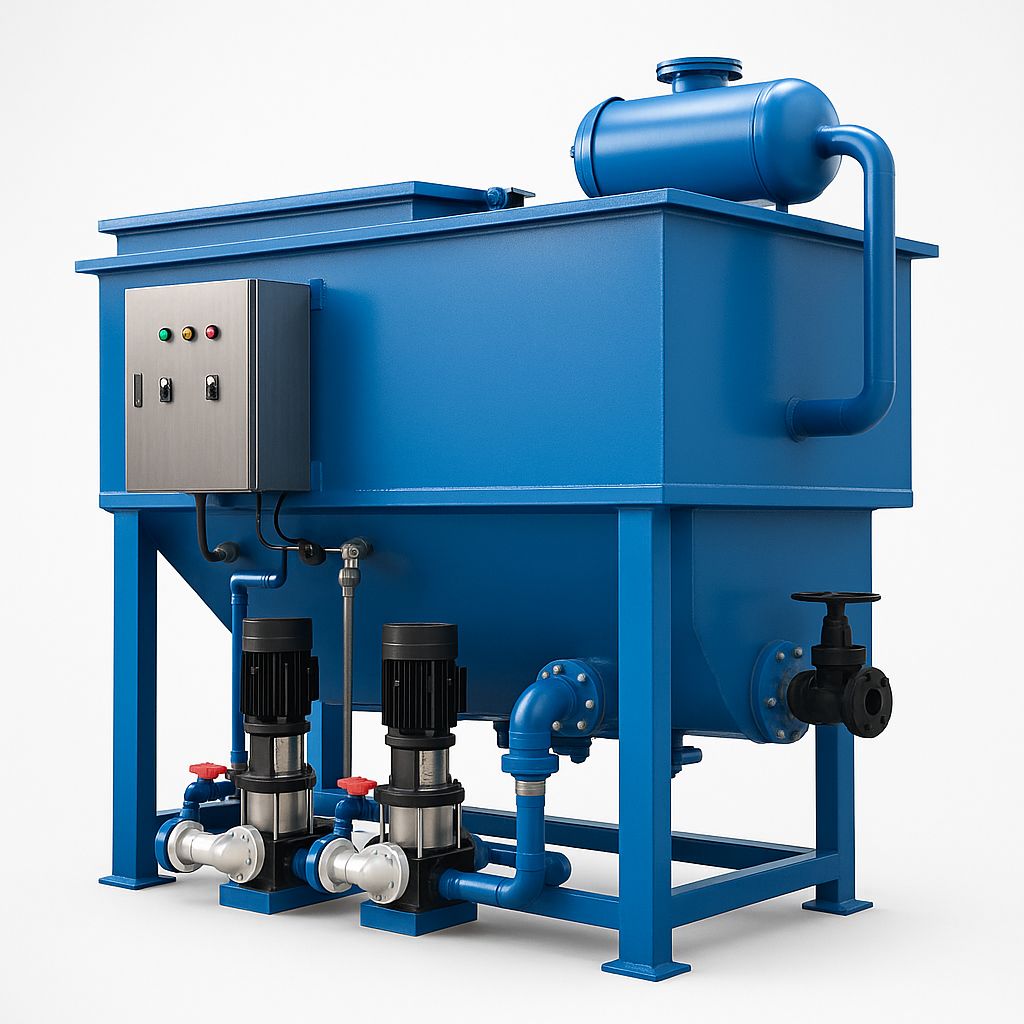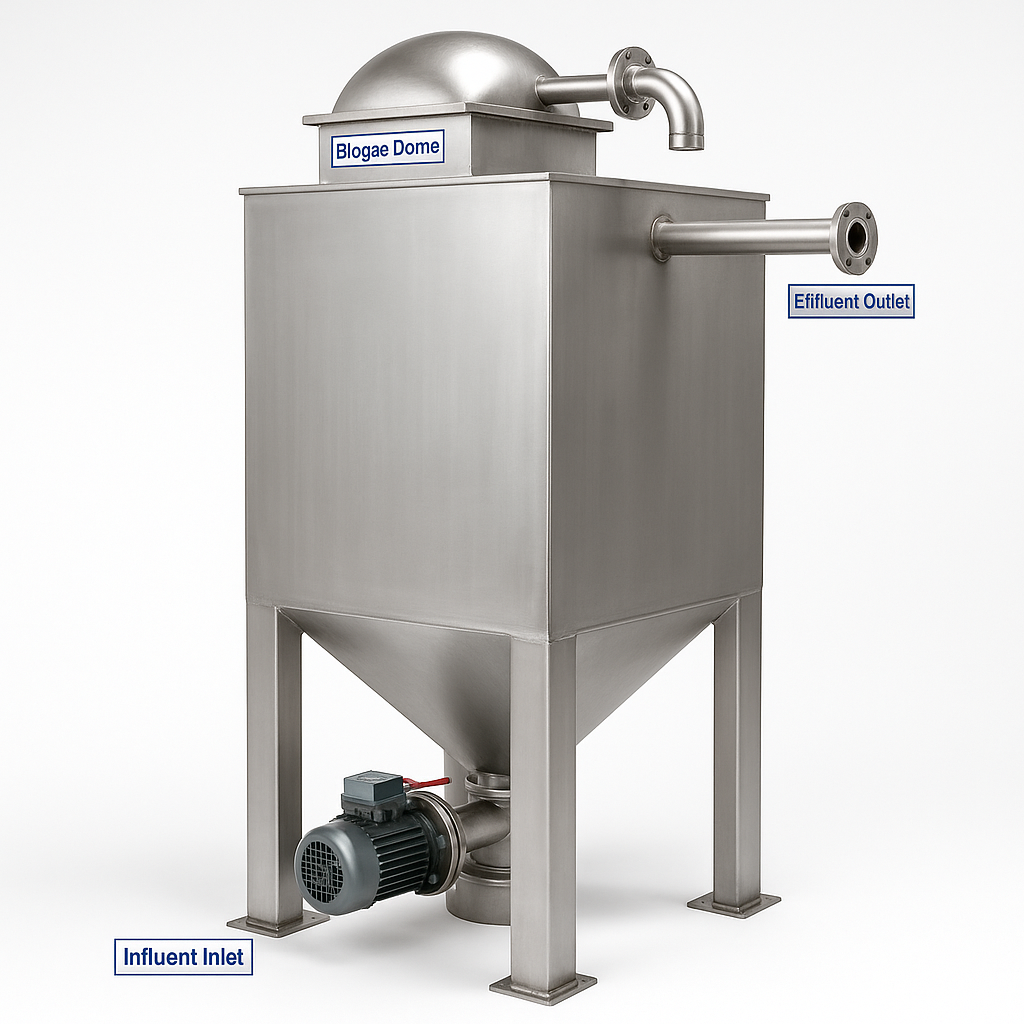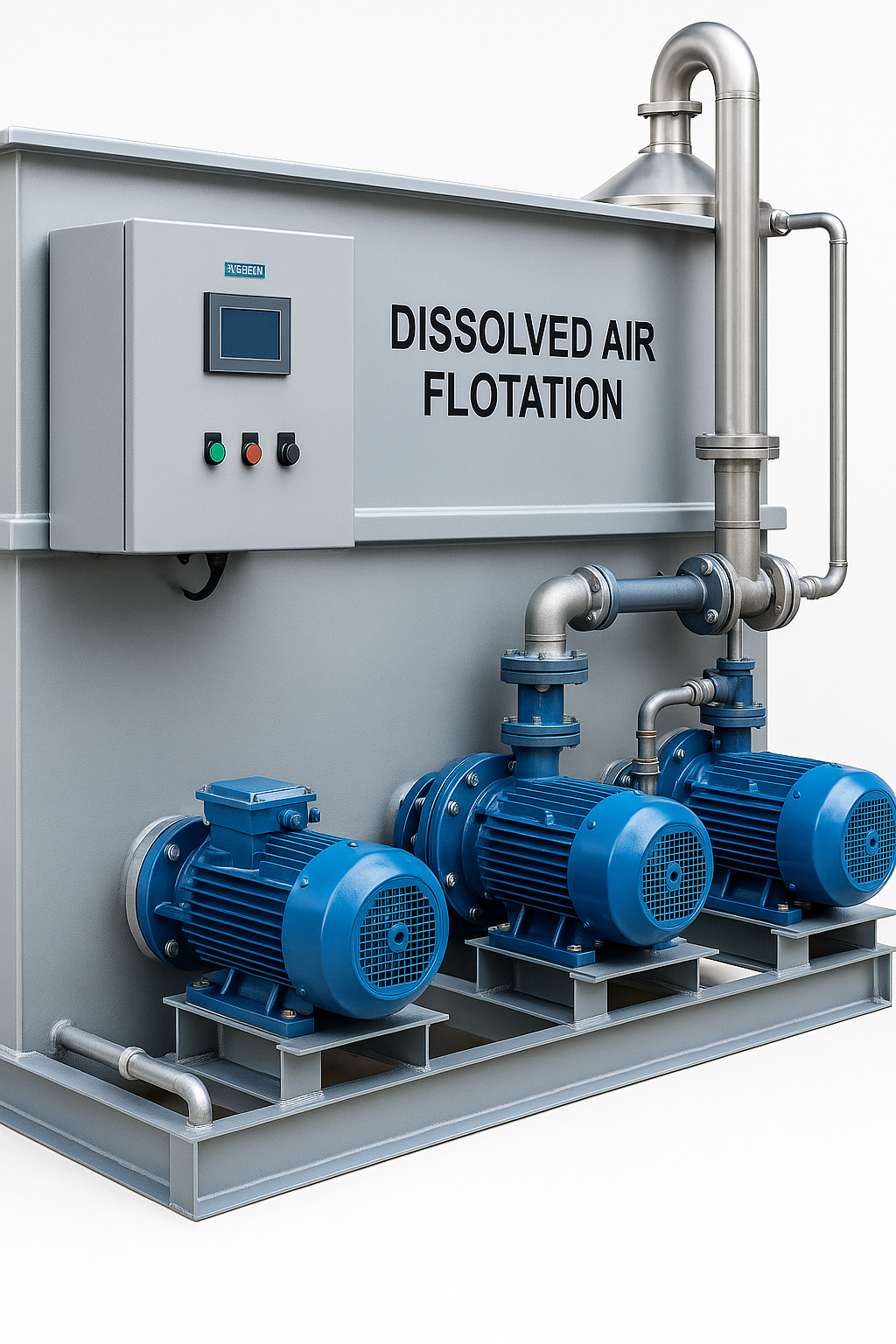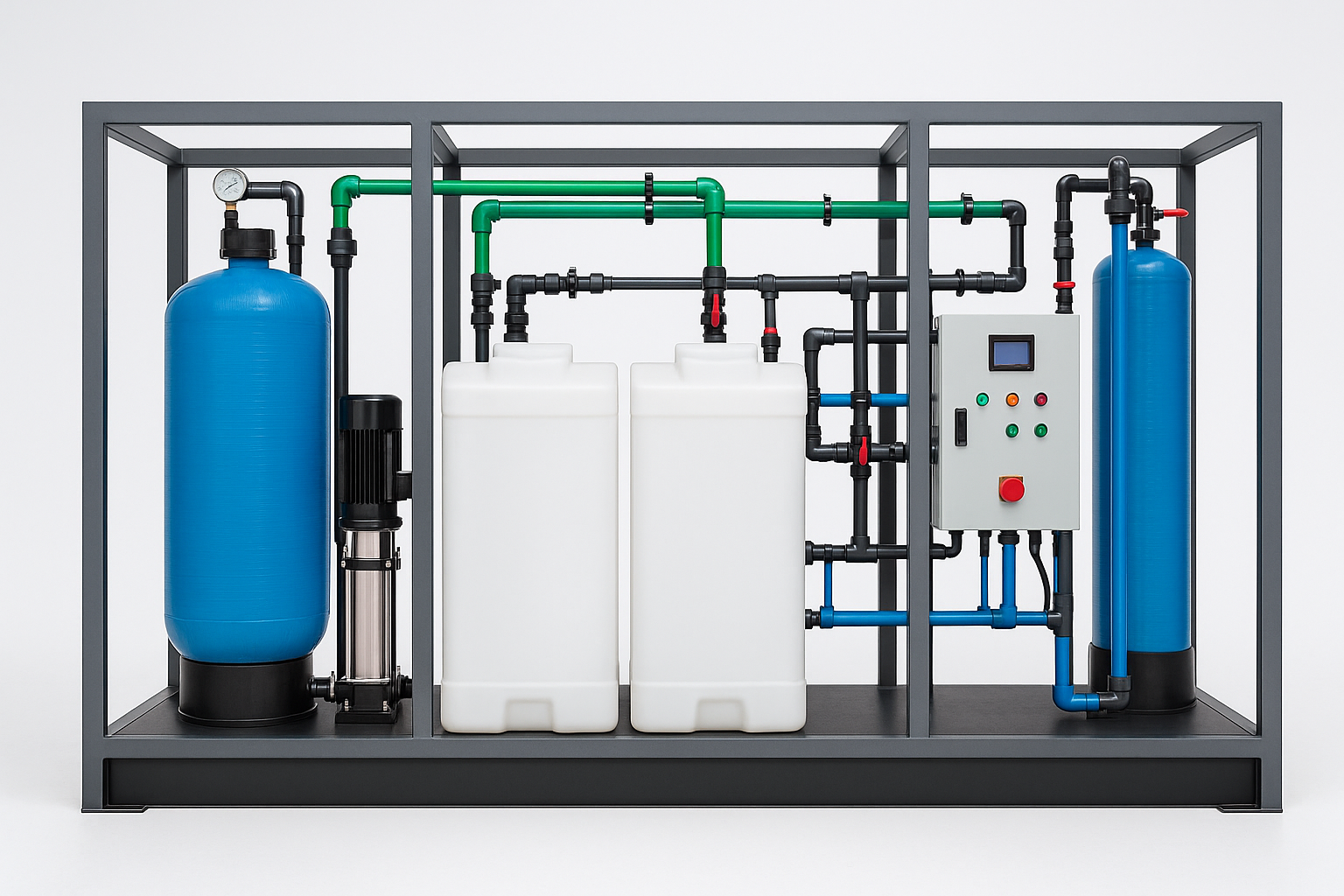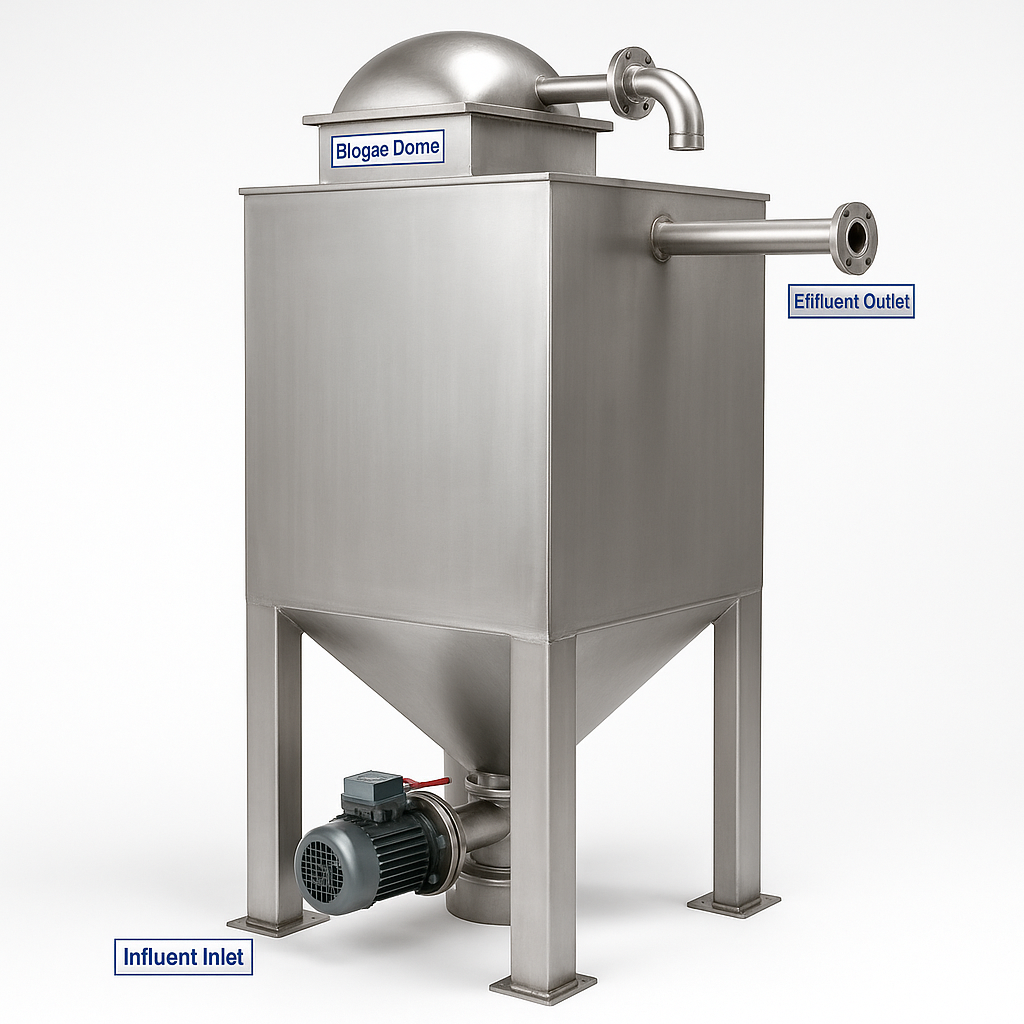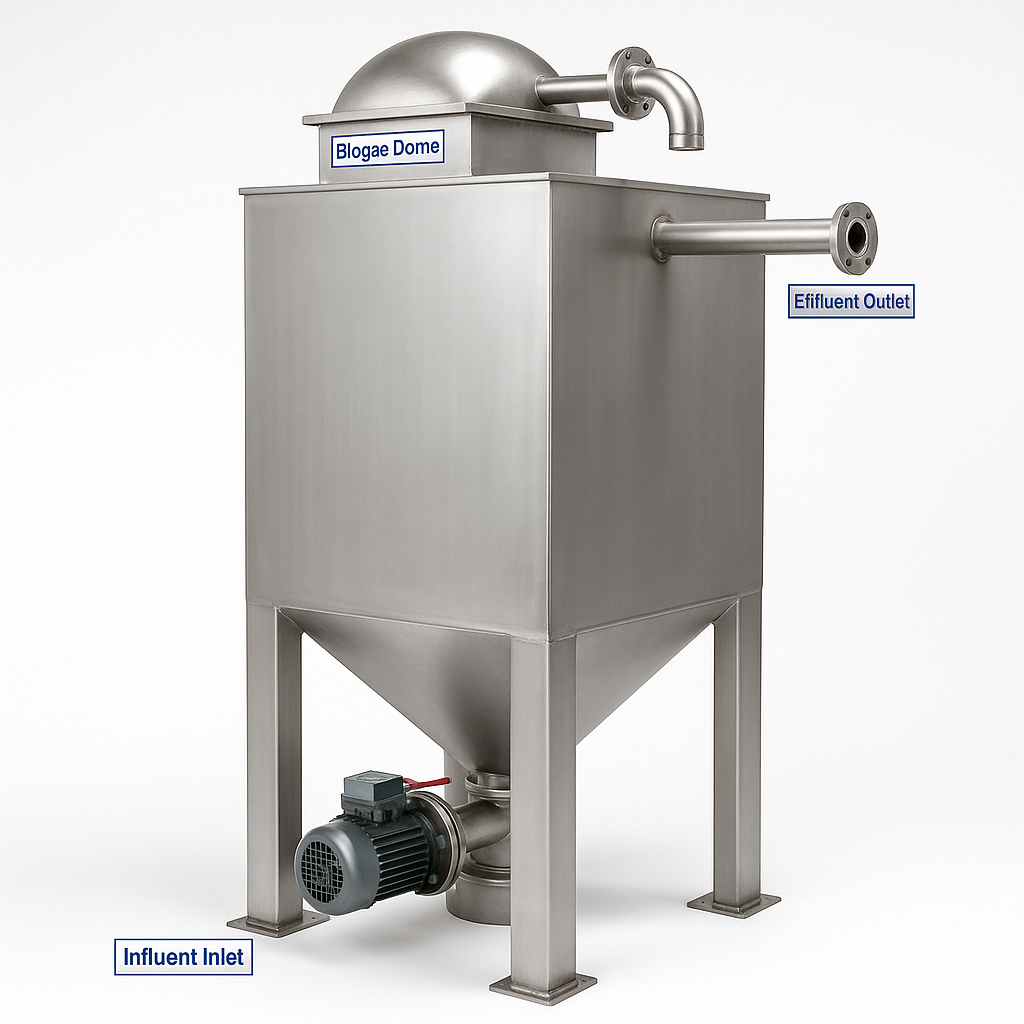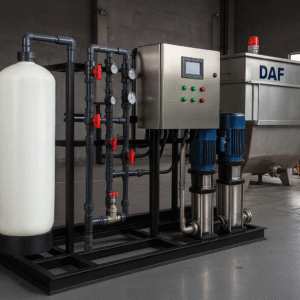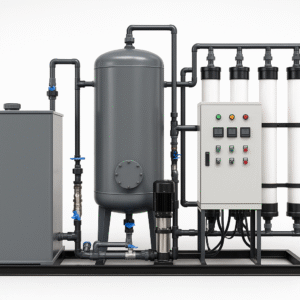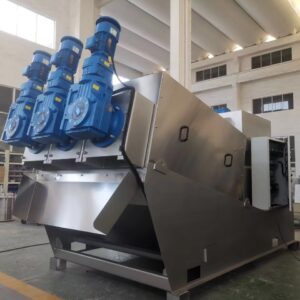STARK UASB Anaerobic Reactor for Industrial Wastewater Treatment
Optimize organic pollutant removal and energy recovery in industrial wastewater treatment with Stark Water’s STARK UASB Anaerobic Reactor. This efficient UASB reactor provides high-rate anaerobic digestion, converting organic load into valuable biogas while significantly purifying industrial effluents with a compact footprint.
Product Description
Managing high-strength organic wastewater from industrial processes presents significant environmental and operational challenges. Traditional aerobic treatment methods can be energy-intensive and require large footprints. The Stark Water STARK UASB Anaerobic Reactor offers a cutting-edge and sustainable solution, efficiently treating industrial effluents while simultaneously generating renewable energy. This advanced biological reactor is designed for high-rate organic pollutant removal, making it an ideal choice for various industrial wastewater treatment applications.
The Efficiency of a UASB Reactor for Industrial Wastewater Treatment
Our UASB (Upflow Anaerobic Sludge Blanket) reactor is a leading technology for high-rate anaerobic digestion, particularly effective for industrial wastewater treatment characterized by high organic concentrations (high BOD/COD). The core principle of a UASB reactor involves wastewater flowing upwards through a blanket of anaerobic granular sludge, which is a highly concentrated biomass containing a consortium of anaerobic microorganisms. As the wastewater passes through this dense blanket, the microorganisms efficiently break down organic pollutants in the absence of oxygen. The key advantages of this process are:
- Biogas Production: A significant portion of the organic load is converted into biogas (primarily methane and carbon dioxide), a valuable renewable energy source that can be captured and utilized, reducing operational costs and carbon footprint.
- High Organic Loading Rates: Capable of handling very high concentrations of organic pollutants, leading to smaller reactor volumes compared to conventional anaerobic systems.
- Low Energy Consumption: Unlike aerobic systems that require aeration, UASB reactors consume very little energy, further contributing to operational savings.
- Low Sludge Production: Anaerobic digestion generates significantly less excess sludge compared to aerobic processes, reducing sludge handling and disposal costs.
This efficient biological process minimizes environmental impact while generating economic benefits for industrial facilities.
Robust Design and Reliable Performance for Diverse Industrial Effluents
The STARK UASB Anaerobic Reactor is built for long-term reliability and stable performance in demanding industrial environments. Key design features ensure optimal efficiency:
- Granular Sludge Retention: The reactor’s internal design facilitates the formation and retention of dense, highly active anaerobic granular sludge, which is crucial for efficient treatment and resistance to shock loads.
- Three-Phase Separator (Gas/Solid/Liquid): An integrated system at the top of the reactor efficiently separates the generated biogas, treated effluent, and sludge, preventing washout of the valuable biomass.
- Durable Construction: Constructed from robust materials (e.g., concrete, stainless steel, or FRP-lined steel), ensuring integrity and longevity against corrosive industrial wastewater components.
- Automated Monitoring: Equipped with intelligent controls for monitoring pH, temperature, flow rates, and gas production, ensuring stable operation and optimal conditions for microbial activity.
This robust and optimized design makes the UASB reactor a highly dependable solution for industrial wastewater treatment plants, consistently meeting discharge limits and supporting sustainability goals.
Sustainable Wastewater Management and Resource Recovery
Implementing the STARK UASB Anaerobic Reactor signifies a commitment to sustainable wastewater management. Beyond effectively purifying industrial effluents, the system’s ability to produce biogas transforms waste into a valuable energy resource, contributing to operational independence and a reduced carbon footprint. Its low energy consumption and minimal sludge production further enhance its environmental profile, making it a responsible and economically beneficial choice for industries seeking advanced and sustainable wastewater treatment solutions.
Product Parameter
Stark Water’s STARK UASB Anaerobic Reactor is engineered for high-rate organic pollutant removal and biogas production in industrial wastewater treatment. Here are its key technical specifications:
| Parameter | Specification / Customization Options |
|---|---|
| Core Keyword Focus | UASB reactor design and capabilities. |
| Reactor Type | Upflow Anaerobic Sludge Blanket (UASB) Reactor. |
| Application | High-rate biological treatment for Industrial Wastewater (high BOD/COD). |
| Capacity (Hydraulic Loading Rate) | Customizable based on wastewater flow (e.g., from 10 m³/day to 5000+ m³/day). |
| Organic Loading Rate (OLR) | Typically 5 – 20 kg COD/m³·day (kilograms of Chemical Oxygen Demand per cubic meter per day). Higher OLR for specific industrial wastewaters. |
| COD Removal Efficiency | Typically 80% – 90% for influent COD > 2,000 mg/L. |
| Biogas Production | 0.2 – 0.5 m³ biogas/kg COD removed (biogas composition typically 50-70% methane). Custom capture and utilization systems available. |
| Reactor Material | Reinforced Concrete (for large scale), Carbon Steel (epoxy coated), Stainless Steel (SUS304/316L) or FRP-lined Steel. Selected based on wastewater characteristics. |
| Operating Temperature | Mesophilic range: 30°C – 40°C (optimal around 35°C). Thermophilic range (optional): 50°C – 60°C. |
| pH Range (Optimal) | 6.8 – 7.2. Automatic pH control/dosing system can be integrated. |
| Sludge Blanket | Contains highly concentrated anaerobic granular sludge. |
| Three-Phase Separator | Integrated system for efficient separation of gas, liquid, and solids. |
| Control System | PLC Automatic Control with monitoring of pH, temperature, flow rates, gas production, and alarm functions. Automation for feeding, recirculation. |
| Power Supply | Minimal, for pumps and controls only (e.g., 3 Phase, 380V/415V/460V, 50Hz/60Hz). |
| Footprint | Relatively compact compared to aerobic systems for equivalent organic load. |
| Sludge Production | Low excess sludge yield (0.05-0.1 kg VSS/kg COD removed). |
| Compliance | Designed to meet relevant local and international discharge standards. |
Applicable Industry
The STARK UASB Anaerobic Reactor is a highly effective and sustainable solution for high-rate organic wastewater treatment, particularly for industrial effluents. Its unique capabilities make it indispensable across a broad spectrum of industries:
- Food & Beverage Industry: Treating high-strength wastewater from dairies, breweries, distilleries, slaughterhouses, fruit/vegetable processing, sugar refineries, and starch production. Effectively removes high BOD/COD while producing biogas.
- Pulp & Paper Industry: Managing wastewater with high organic content (e.g., from pulp mills, paper production) and recovering energy.
- Chemical Industry: Treating various organic-rich chemical wastewaters, often where anaerobic conditions are suitable for specific compounds.
- Pharmaceutical Industry: For biological treatment of high-strength organic effluents from pharmaceutical manufacturing, including wastewater containing complex organic compounds.
- Textile & Dyeing Industry: Treating wastewater with high COD, color, and organic matter from dyeing and finishing processes.
- Alcohol & Biofuel Production: Treating distiller’s grains, fermentation wastewater, and other high-strength organic effluents from biofuel plants.
- Starch & Fermentation Industry: Highly effective for wastewater with high organic loads from starch, yeast, and other fermentation processes.
- Sugar Industry: Treating wastewater from sugar beet and sugarcane processing plants.
- Oil & Gas Industry (Specific): For treating specific high-organic wastewater streams within refining or processing, benefiting from biogas production.
- Municipal Wastewater Treatment (Co-digestion/Pre-treatment): Can be used for co-digestion of industrial waste with municipal sewage or as a primary high-rate biological treatment step for municipal wastewater.
Advantage One
Advantage TWO
Related Products
منتجات ذات صلة
- معدات معالجة مياه الصرف الصحي
STARK Dissolved Air Flotation (DAF) System for Industrial Wastewater Pretreatment
Add to Quote - معدات معالجة مياه الصرف الصحي
STARK Integrated Sewage Treatment Plant for Municipal & Industrial Use
Add to Quote - معدات معالجة مياه الصرف الصحي
STARK Sludge Dewatering Machine for Wastewater Treatment Plants
Add to Quote
FAQ
Q1: How long does the reverse osmosis system last?
The lifespan of a reverse osmosis system depends on water quality and maintenance. Typically, the membrane lasts 2–3 years, while the system itself can last over 10 years with proper care.
Q2: Can the system be customized based on different water conditions?
Yes, all our systems are fully customizable. We analyze your water report and application needs before providing tailored solutions.
Q3: What standards does STARK equipment comply with?
Our products comply with CE, ISO 9001, and can be designed to meet specific regional regulations or industry standards upon request.
Q4: What is the delivery time for STARK RO systems?
Standard systems are shipped within 7–15 days. For customized orders, lead time may extend to 20–25 days depending on complexity.
Q5: Do you provide technical support or installation guidance?
Yes. We provide full technical documentation, remote guidance via video, and can dispatch engineers internationally upon request.
Q6: What is included in your quotation?
Our quotation includes the full RO system, control panel, pumps, pre-treatment units, and all necessary fittings. Installation tools and spare parts can be included upon request.

